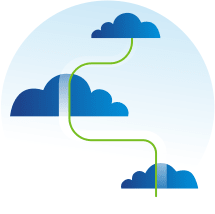Tag: Infrastructure
How to Install Jenkins on AlmaLinux
Jenkins is an open-source continuous integration server. It is a tool for continuously compiling and testing software projects. In the field of Continuous Integration (CI), the concepts from CI are combined with those from Continuous Delivery (CD) — also known as Continuous Deployment — in the CI/CD pipeline. See our The Best DevOps Tools for Infrastructure Automation for more information about this growth area in advanced software development techniques.
How to Install ESXi 5.x or 6.x in VMware

What is ESXi vSphere?
VMware vSphere is a virtualization platform that creates aggregated computing infrastructures consisting of networking resources, CPU, and storage out of data centers. The main elements of vSphere are vCenter Server and ESXi, formerly VMware vSphere Hypervisor. It is a bare-metal hypervisor installable directly on your server or Workstation.
Cloud Servers vs Physical Servers: A Comparison
Choosing the right hosting environment is essential in positioning a business for successful growth. Companies operate differently based on clientele, the need to process information/orders, and how quickly market adaptation changes are needed. The common thread is the necessity of being digital to survive in today’s economy. Eventually, you’ll reach the crossroad of comparing a cloud server to a physical server to determine your best hosting environment.
What is Desktop-as-a-Service?

Introduction
As firms advance towards a more modern infrastructure, the Desktop-as-a-Service (DaaS) model is becoming an increasingly popular cloud-based system. Desktop-as-a-Service is a multi-tenant, cloud computing solution in which a service provider furnishes a virtual desktop to an end-user over the internet. A provider typically manages the infrastructure, including the security updates, available desktop applications, data storage, and backups. In specific instances, DaaS users manage these services individually. According to Gartner via Workspot:
What are the Five Criteria Of a Cloud Platform?
Cloud computing is a model for empowering users to access a useful, network-accessible, shared pool of resources that allows for quick changes to settings and configurations with minimal intervention from a service provider in an easy-to-maneuver self-service management interface.
Why Choose a VMware Cloud?

If you have been in the hosting industry for some time, you most likely had to upgrade your hosting package or resize your server at some point. As your business grows, so do the resources needed to run that business. Over the years, someone has most likely recommended a private cloud solution to you. You probably asked yourself why you would need a more expensive private solution like VMware cloud when you have a powerful VPS server or Dedicated server that is perfectly capable of handling your existing traffic.
SaaS vs PaaS vs IaaS: What’s The Difference and How Do You Choose?
Moving an Internet business to a cloud platform has flourished and gained prominence in the current industrial climate. Three main types of cloud computing service models are Software-as-a-Service (SaaS), Platform-as-a-Service (PaaS), and Infrastructure-as-a-Service (IaaS).
A Beginner’s Guide to Chef on CentOS 8
What is Chef?

Chef is an open-source configuration management DevOps tool used for configuration and management of multiple systems in infrastructure. Using Chef, we can use so-called recipes and cookbooks to automate and speed up managing multiple systems in our environment. By using Chef, we can adjust every system in our environment to our desired state, which we defined using the code in recipes. In the process, code is continuously tested and deployed using Chef.
How to Install Jenkins on Ubuntu 20.04
How to Install Jenkins on CentOS 8
What is Jenkins?
Jenkins is an open-source software written in Java and Scala. This software allows users the ability to automate almost any task and, it saves significant time that can be better utilized addressing other issues. When automating tasks with Jenkins, users can optimize their workflow by quickly automating the jobs that servers cannot do themselves. In this tutorial, we will learn how to install Jenkins on CentOS 8. We will also explore what its purpose is and share several benefits that Jenkins offers. We will then configure it to run on our CentOS 8 server.
Our Sales and Support teams are available 24 hours by phone or e-mail to assist.

